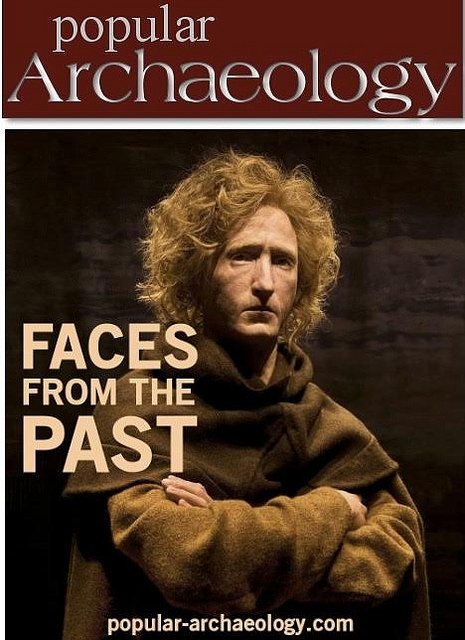
Lost in the media frenzy surrounding the discovery of Homo naledi, the new early human species identified from the excavations at the Rising Star cave complex in South Africa, was another equally stunning development that was reported on September 11, 2015 by Ann Gibbons in an article* published by Science. In that article, she related the announcement by a team of researchers that they had successfully sequenced nuclear DNA from 400,000+-year-old bones (the actual sampling taken from a tooth and leg bone) discovered in the Sima de los Huesos (‘Pit of Bones’) cave of northern Spain.
By doing so, the researchers, headed by Matthias Meyer of the Max Planck Institute for Evolutionary Anthropology in Leipzig, Germany, came to several game-changing conclusions about the course of human evolution:
First, that the early human species discovered in the Sima cave by the team headed by paleontologist Juan-Luis Arsuaga of the Complutense University of Madrid and colleagues were, as suspected, a human species related to Neanderthals, either as direct ancestors or ancestral to a sister group related to Neanderthals.
Second, given the age of the fossils and their morphology, the DNA finds significantly push back the timing of the origins of the Neanderthals.
And third, the DNA makeup suggests that Homo sapiens, or modern humans, may have split away as a separate species from a common ancestor with Neanderthals and Denisovans (another ancient human species) as early as 550,000 to 765,000 years ago, 100,000 to 400,000 years earlier than previously thought.
The findings have far-reaching implications for understanding the course of human evolution as it relates to the place of Neanderthals, Denisovans, and Homo sapiens in the human family tree (or ‘bush”, as many paleoanthropologists now prefer to call it). All three species are members of the same genus (Homo), and all three are thought to share a common ancestor. But the DNA findings, in tandem with the findings related to the osteological analyses of the 430,000-year-old fossils themselves, suggest an evolutionary picture considerably more complex than the model advanced by many scientists in the past, opening up a new series of questions revolving around where, when and how these separate species came to be and precisely who their common ancestor was.
Moreover, the DNA research highlights recent developments in sequencing ancient DNA, developments that have afforded geneticists the ability to unlock genetic codes in very ancient bone material to an extent never before thought possible, revealing more and more that the course of human evolution may have actually been a complex, “messy” process, and not the simple, straight-line model that scientists have traditionally suggested.
The excavation of over 6,700 human fossils representing 28 individuals in the Sima de los Huesos cave was the result of more than two decades of field work in the Atapuerca mountains of northern Spain, an area long known to contain a treasure trove of fossils of early humans and Neanderthals. The finds at Sima constitute the largest collection of archaic human fossil bones found at any single site in the world. Work at the site is ongoing, and scientists believe that more will yet emerge from the continuing study of the finds recovered from the site.
_____________________________________________
Reconstructed skull 17 from the Sima de los Huesos site in Sierra de Atapuerca, Spain. This image relates to a paper that appeared in the 20 June, 2014, issue of Science, published by AAAS. The paper, by Juan-Luis Arsuaga at Centro Mixto UCM-ISCIII de Evolución y Comportamiento Humanos in Madrid, Spain, and colleagues was titled, ‘Neandertal roots: Cranial and chronological evidence from Sima de los Huesos.’ Image credit Javier Trueba / Madrid Scientific Films
____________________________________________________________
*Ann Gibbons, DNA from Neandertal relative may shake up human family tree, Science, 11 September 2015.
____________________________________________________________
Did you like this? For more information about the Sima de los Huesos discoveries, see the article, Not Quite Neanderthal, published in the Fall 2015 issue of Popular Archaeology magazine.
____________________________________________________________
In addition, the latest Popular Archaeology ebook is now available.
______________________________________________
Travel and learn with Far Horizons.
____________________________________________
 This richly illustrated ebook version of a recent Popular Archaeology issue includes the following stories: The discovery of the tomb of a previously unknown pharaoh that is shedding light on a lost ancient Egyptian dynasty; how genetics is revolutionizing what we know about human evolution and our prehistoric past; one scholar’s controversial ‘New Chronology’ and how it supports the historicity of the biblical Exodus; how archaeologists are unearthing new history in Williamsburg, Virginia, a seat of British colonial power in 18th century America; the discovery of the remains of a major Roman legionary base in Israel; the unearthing of an ancient Judean fortified settlement in the borderlands between the biblical kingdoms of ancient Judah and the Philistines; and how archaeologists are uncovering evidence of what may have been an important administrative center of Judah during the 8th century BCE. Now available from Amazon.com!
This richly illustrated ebook version of a recent Popular Archaeology issue includes the following stories: The discovery of the tomb of a previously unknown pharaoh that is shedding light on a lost ancient Egyptian dynasty; how genetics is revolutionizing what we know about human evolution and our prehistoric past; one scholar’s controversial ‘New Chronology’ and how it supports the historicity of the biblical Exodus; how archaeologists are unearthing new history in Williamsburg, Virginia, a seat of British colonial power in 18th century America; the discovery of the remains of a major Roman legionary base in Israel; the unearthing of an ancient Judean fortified settlement in the borderlands between the biblical kingdoms of ancient Judah and the Philistines; and how archaeologists are uncovering evidence of what may have been an important administrative center of Judah during the 8th century BCE. Now available from Amazon.com!
____________________________________________









